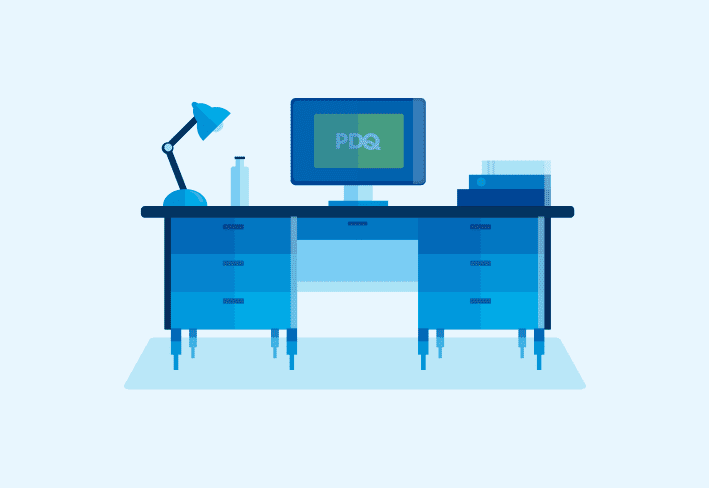Automox is an IT operations platform that automates patch management, security configurations, and compliance across Windows, macOS, and Linux devices. Some sysadmins appreciate the single pane of glass, but others look elsewhere due to the cost or capabilities. We’ll break down how the top Automox competitors compare.
Why consider an Automox alternative?
While some are drawn in by Automox’s automated cross-OS patching, many sysadmins look elsewhere due to the price point, performance, and one-size-fits-all approach.
Prohibitive price
Depending on your budget, Automox may be cost prohibitive. And since you likely need to contact the sales team for pricing info, you’ll have to commit some time and effort to even find out if you can afford it.
"The most significant disadvantage of Automox is the cost, especially when scaling up to medium to large enterprise sizes.” — Kevin S., senior infrastructure engineer
Inconsistent performance
Some Automox users report performance issues, particularly slowness and access issues.
“Over the past 6 to 8 months we've seen a significant degradation in performance and reliability with the product. Frequent outages of the console, delays in policies processing, or patching policies not processing at all. Sometimes this happens multiple times per week and is really disappointing and has dented our confidence in the product.” — Verified user in utilities
Minimal customization
Some users feel that Automox doesn’t offer enough flexibility to tailor the experience to their specific requirements, which can limit its adaptability in more complex IT environments.
“I wish there were more customization options available for policies and workflows, as this would allow us to tailor the patching process more closely to our specific needs." — Verified user in banking
1. PDQ Connect
PDQ Connect is a reliable agent-based solution for managing Windows devices remotely. Based on the popular PDQ Deploy & Inventory, this feature-rich device management platform offers automated software updates, real-time device visibility, custom scripting, robust reporting, and more. Missing patches and chaotic manual processes? Not on your watch.
Features
Automated patching
Automated vulnerability remediation
Environment-based vulnerability prioritization
Scheduled patch deployment
Robust prebuilt and custom reports
Large Package Library of prebuilt third-party app packages
Customizable device groups
Remote desktop capabilities
Pros
Fast performance
Intuitive yet flexible design
Optimized Windows-centric approach
Transparent, approachable pricing
Focused feature set
Robust reporting
User-friendly interface
Exceptional support from seasoned sysadmins
Cons
Does not currently support Linux or macOS (though macOS is on the roadmap)
What makes PDQ Connect the top Automox alternative?
PDQ Connect is the top Automox alternative because it gives Automox users a faster, more intuitive way to patch, manage, and secure Windows devices — without the bloat.
Speed
PDQ Connect moves fast with real-time scans, quick deployments, and patching that doesn’t drag. Automox users have called out slower load times and delays, which can turn simple tasks into a waiting game.
Features
Built for how sysadmins actually work, PDQ Connect gives you powerful, built-in tools for software deployment, patch automation, asset management, vulnerability management, and remote access — without needing extra add-ons or workarounds. Automox covers a lot of features, but PDQ packs in more of what sysadmins actually use, focusing on quality over breadth.
Price
PDQ tells you exactly what you’re paying for — no chasing sales reps, no fine print. With simple, transparent, per-device pricing and zero surprise add-ons, it's easy to scale without budget guesswork. Automox, on the other hand, tacks on extra costs for certain features, and anything above the base plan requires a custom quote.
Centralize your endpoint management
With PDQ Connect, gain real-time visibility, deploy software, remediate vulnerabilities, schedule reports, automate maintenance tasks, and access remote devices from one easy-to-use platform.
2. SecOps Solution
SecOps Solution is a vulnerability and patch management solution intended to streamline IT operations and enhance security posture. With agentless patching, automated workflows, built-in vulnerability management, and detailed reporting, SecOps Solution provides a unified approach to endpoint security and patch management.
Features
Agentless patching
Vulnerability detection and prioritization
Automated patch deployment
Detailed reporting and analytics
Support for Windows, macOS, Linux, and third-party applications
Customizable patch policies
Pros
Comprehensive vulnerability and patch management in a single platform
Real-time insights into patch status and compliance
Supports most widely used operating systems
Customizable policies to fit organizational needs
Cons
Focused more on security than IT
Young company
Limited feature set compared to more mature platforms
3. ManageEngine
ManageEngine offers a management suite that includes two solutions designed to provide unified endpoint management and robust patching capabilities: ManageEngine Endpoint Central and ManageEngine Patch Manager Plus. These tools cater to organizations seeking detailed control over their IT infrastructure, but they’re perhaps best suited for those also using other ManageEngine tools in their environment.
Features
Cross-platform patch management (Windows, macOS, Linux)
Support for hundreds of third-party applications
Software deployment
Remote access
Asset management and reporting
Mobile device management (MDM)
Pros
Rich, customizable feature set
Flexible deployment options (cloud or on-prem)
Strong third-party app patching support
Solid integration with other ManageEngine tools
Cons
Complex setup and steeper learning curve
May be overkill for SMBs or lean IT teams
Pricing can increase significantly with advanced features
4. Microsoft Intune
Microsoft Intune is a cloud-based unified endpoint management (UEM) solution that integrates seamlessly with the Microsoft ecosystem. In fact, you might already pay for it as part of an existing plan. Intune offers device and application management across various platforms, including Windows, macOS, iOS, Android, and Linux. If you’re deeply invested in Microsoft's infrastructure, this might be the Automox alternative you’re looking for.
Features
Cross-platform device management (Windows, macOS, iOS, Android, Linux)
Mobile device management (MDM) and mobile application management (MAM)
Integration with Microsoft 365, Azure Active Directory, and Microsoft Defender
Conditional access and compliance policies
App deployment and management
Endpoint analytics and reporting
Pros
Seamless integration with Microsoft services
Comprehensive security and compliance features
Scalable design for organizations of various sizes
Multi-OS support
Cons
Complex initial setup and configuration
May require additional training for optimal utilization
Advanced features require higher-tier subscriptions
5. Heimdal Patch Management
Heimdal Patch Management is a security-focused solution designed to automate vulnerability management and software updates across various operating systems. It offers fast patch deployment, asset tracking, and customizable policies, making it suitable for organizations seeking efficient patch management.
Features
Automated patch deployment for Windows, macOS, and Linux
Asset inventory management with detailed reporting
Customizable patching policies and scheduling
Integration with Heimdal's Unified Security Platform
Encrypted patch delivery to ensure security
Pros
Patch delivery within 4 hours from release
Comprehensive asset management capabilities
User-friendly interface
Responsive customer support
Cons
Initial setup and configuration may require a learning curve for some users
Advanced features might require additional modules or integrations
6. ConnectWise Automate
ConnectWise Automate is a remote monitoring and management (RMM) platform designed primarily for managed service providers (MSPs). With extensive automation capabilities, ConnectWise Automate helps enable proactive issue resolution and efficient endpoint management.
Features
Remote monitoring and management of endpoints
Automated patch management for Windows and third-party applications
Scripting and automation for routine tasks
Asset discovery and inventory management
Customizable dashboards and reporting
Pros
Robust automation and scripting capabilities
Comprehensive monitoring and management features
Seamless integration with other ConnectWise products
Customizable to fit specific organizational needs
Scalable design
Cons
Steep learning curve for new users
Complex, unintuitive interface
Inconsistent customer support
7. Datto RMM
Datto RMM, a cloud-based remote monitoring and management (RMM) platform, is designed primarily for managed service providers (MSPs). Its suite of tools offers endpoint management, automation, and security, aiming to streamline IT operations and enhance service delivery.
Features
Cross-platform support for Windows, macOS, and Linux
Automated patch management
Real-time monitoring and alerting
Remote access and control capabilities
Customizable dashboards and reporting
Pros
Easy to use for many sysadmins
Comprehensive feature set tailored for MSPs
Integration with other Datto products
Regular updates and feature enhancements
Scalable solution for various organizational sizes
Cons
Occasional performance issues
Complicated pricing
Automox alternative FAQs
What is Automox?
Automox is a cloud-native endpoint management platform that helps IT teams automate patching, deploy software, enforce configuration policies, and manage devices across Windows, macOS, and Linux systems.
What should I look for in an endpoint management tool?
Look for an endpoint management tool that will support a streamlined patch management process through strong automation features, a robust software catalog, and automated configuration options. These can help ensure efficiency, security, and scalability — without giving you a headache.
What should I consider when reading Automox reviews?
Pay attention to real-world user feedback on ease of use, the reliability of automated patch management, and how well the platform handles configuration through its Worklets (reusable code units). Look for insights on customer support quality, reporting depth, and how Automox compares to other tools in terms of automation flexibility and cross-platform support.
What is the best Automox alternative for me?
The best Automox alternative depends on your patching workflow, automation needs, software support requirements, and how much control you want over device configuration. Compare options like those above to find the tool that fits your environment.




